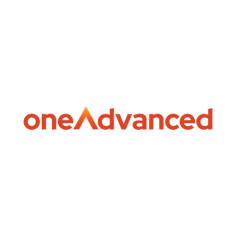How to get fee earners recording time and why its important according to OneAdvanced
The hallmark of a successful law practice isn’t just in top lawyers and airtight cases; it’s governed by precision, where every minute counts, or at least should be. Effective time recording is pivotal for the financial health and operational efficiency of law firms.
However, capturing billable hours accurately and consistently remains a challenge. A challenge that, if not addressed, could lead to significant profit leakage. With only one quarter of legal professionals realising 70% or more of their billable time targets, it’s evident that there’s room for improvement.
The conundrum of missed billable hours
As a profession, we focus a lot on billable hour targets, but oftentimes are unable to keep up with the recording of those hours when we work them.
On average, fee earners miss one hour of billable time daily, and 61% of law firms have said that they struggle with the capture of billable hours – either recording them accurately, or forgetting to record them at all.
The inherent complexity of legal tasks, often involving multitasking across various cases, research, client consultations, and administrative duties can make it challenging for fee earners to track every minute of their workday accurately. Additionally, fee earners may not consistently track their time due to the belief that they can accurately recall their activities at the end of the day, a practice that often leads to underreporting.
Further exacerbated by the dynamic and unpredictable nature of legal work, urgent client needs or unexpected developments in a case can rapidly shift priorities, making it difficult to maintain a consistent time-tracking routine. Moreover, the traditional methods of time tracking, such as manual entry into spreadsheets or software systems, are time-consuming and prone to errors. This not only affects the accuracy of billable hours captured but also interrupts the workflow, reducing overall productivity.
Insight from Dr Keriene Dovile, IT and Business Project Manager at Ellex Valiunas, reflects on their transformation: “Our in-house old-fashioned, feature poor timekeeping platform was in desperate need of a replacement. We had lawyers complaining about the system and our mobile professional staff were unable to enter time while on the road and out of the office. It was time to switch.”
The culture of some law firms may inadvertently contribute to the problem. In environments where there is an excessive emphasis on billing targets without adequate support or training on effective time management and tracking techniques, fee earners might resort to guesswork rather than meticulous recording. This not only affects the law firm’s revenue but can also lead to burnout among employees who feel pressured to meet expectations without the necessary tools or strategies.
The human element
In the quest to get staff recording time, it’s imperative to acknowledge that while methods and tools play a pivotal role, it’s the human element that truly completes the equation. Even the most advanced solutions require input from fee earners to ensure accurate time capture. The importance of instilling a culture of time capture accountability among legal professionals should not be understated.
Recognising the human factor should prompt firms to invest in fostering a work environment conducive to efficient time capture. Training programs that emphasise the symbiotic relationship between technology and human input can bridge the gap between intention and execution, ensuring that every billable minute is accounted for. Fostering a work environment that supports time capture is what Jon Wyche, IT Director at Meunier Carlin & Curfman, attributes to their time capture success: “By supporting the roll-out with a very well planned and executed training program, we’ve achieved an outstanding 100% adoption rate.”
Adopting modern time capture solutions
A significant part of the solution lies in adopting modern time recording tools tailored for today’s lawyers. Unfortunately, despite the evident benefits, only 44% use time recording software, a representation of a significant opportunity for law firms to gain an edge.
Law firms can significantly reduce the manual effort and time spent on tracking billable hours, minimising errors and inconsistencies. Not only streamlining administrative processes but allowing lawyers to focus more on their core activities – providing top legal services.
Jon Wyche shares their approach: “Time Capture provided our users with the ability to easily enter time on desktops, or on their phone when they’re working remotely. Now, quick lookups, changing fields or labels, and moving between devices, is all easy. It’s a high-efficiency hybrid model that provides our lawyers with everything they need for smooth time recording.” This sentiment is echoed by Leonardo Brandileone, CIO at Mattos Filho, who believes “It makes lawyers more efficient because they now have one-click access to time logging, Lawyers can, for instance, come out of a meeting and post their hours easily and immediately.”
The success of intuitive software
When time recording is made intuitive, the leap in efficiency is noticeable. “Our lawyers have reported that they like the new, flexible capability of time capture,” Leonardo Brandileone notes, highlighting the reduced complexity as a critical factor in increased participation.
The deployment of any new system is most effective when accompanied by comprehensive training. Jon Wyche credits an “outstanding 100% adoption rate” at Meunier Carlin & Curfman to their well-planned training program based on the OneAdvanced ‘train the trainer’ model, setting a benchmark for best practice in technological transitions.
Remote accessibility has become non-negotiable in the modern workspace. Mette Marie Harder Winther-Sørensen, Office Administrator at IUNO, reveals how flexibility led to a positive shift in their practice: “The fact they can use time capture on their phones, instead of having to open an application on the desktop, has definitely resulted in more time being captured. And with smaller increments of time being recorded, invoice realisation has also increased.” Highlighting the need for a tech infrastructure that supports lawyers wherever they may be.
Calculated and quantified
When you truly appreciate the numbers of it all, you understand just how many hours and the amount of revenue is being left on the table.
On average, fee earners don’t bill one hour per day of work that they otherwise should’ve – mainly be forgetting about it when it comes to inputting the data into the system which could be several days afterwards in many cases. That’s 222 billable hours per fee earner per year. Not only that, but the actual manual process of inputting time recordings into systems accounts for around 66 hours per year, again per fee earner. That’s 288 billable hours per year that your fee earners could be accounting for as revenue right now if time recording practices were automated.
Moreover, with complaints and fee discounts on the rise (mainly due to a lack of transparency on costs throughout a case) law firms typically collect approximately 89% of invoiced amounts. That’s 11% more that could be put back into your balance sheet with better billing practices.
To illustrate this, we developed a time capture calculator which uses these calculations and a few inputs on your side as to the number of fee earners, the amount you bill and what you are targeted to bill, and reveal the added revenue possible through time recording software and how that impacts your target. You might find that you don’t need to attract new business to meet your targets and instead can focus on the service you are providing in-house.
Here is two such examples:
- A law firm with 10 fee earners with a target of 1,350 hours each on average; they are currently billing 1,000 hours each on average and a billable hour rate of £200. This represents a shortfall between target and actual revenue of £70,000 per fee earner and £700,000 to the business.
- However, when we look at the figures above (the 222 hours that go unrecorded, and 66 hours of manual inputting – as well as an 11% uplift that went towards fee discounts) that amounts to £79,600 per fee-earner and £796,000 to the business in additional revenue without working any additional hours.
- What that means is that by going from no time recording practices to time recording with time capture software, a firm that was hitting only 74% of their billable hour target could see it rise to 104% without working any additional hours.
- A firm with 86 fee earners and an average hourly rate of £450 are currently billing 1,500 of their 1,750 targeted hours – leaving a shortfall of £112,500 per fee earner and £9,675,000 across the firm. With the calculations above, time recording practices and instituting time capture software could realise around £17,531,100 in that situation – £203,850 per fee earner and taking target acquisition from 86% to 112%!
These examples reveal a universal truth: law firms stand to gain significantly from implementing time capture software. The issue many law firms face is not a lack of work but a failure to capture all billable work due to inefficient or outdated timekeeping practices. By harnessing the power of time capture technology, law firms can ensure that no billable minute goes unrecorded, transforming potential losses into realised gains.
Impact
Ultimately, the right time capture system can directly impact the bottom line. Dr Keriene Dovile shares an uplifting revelation: “Overall, more of our users are using time capture, including partners who never touched the previous system. Our management is confident that this will lead to increased technology adoption by firm leaders and will help us achieve higher rates of time capture and revenue.”
A robust time recording system does not only facilitate internal processes but also fosters trust through timely and accurate invoicing. Jon Wyche adds, “Time capture allows us to capture more billable hours, increase the speed of time capture, and provide timely, and accurate, invoices to our clients.” In an industry where trust and transparency are paramount, this cannot be overstated.
Recommendations for law firms
- Select intuitive time capture software: Choose systems which are user-friendly and require minimal training, to encourage usage.
- Ensure flexibility and accessibility: Opt for solutions that allow time recording on multiple devices, enabling lawyers to capture time as they work, without being tethered to their desks.
- Implement training programs: A ‘train the trainer’ model can be crucial in achieving high adoption rates among all fee earners, including those resistant to change.
- Regularise time entry: Foster a habit of recording time immediately after tasks to prevent forgetfulness and inaccuracies.
- Focus on client benefits: Stress the link between accurate timekeeping and client satisfaction. Punctual, precise bills cultivate client trust.
Law firms have a clear pathway to optimising their time recording. By considering the perspectives of both fee earners and clients and by integrating smart, modern tools into everyday workflows, law firms can step into a future where every billable hour is captured efficiently, enhancing productivity, revenue, and, ultimately, customer satisfaction.
By acknowledging the significance of both technological innovation and human diligence, law firms can forge a path towards enhanced productivity, revenue growth, and client satisfaction. In this fusion of technology and human effort lies the key to unlocking the full potential of time management within the legal profession.



